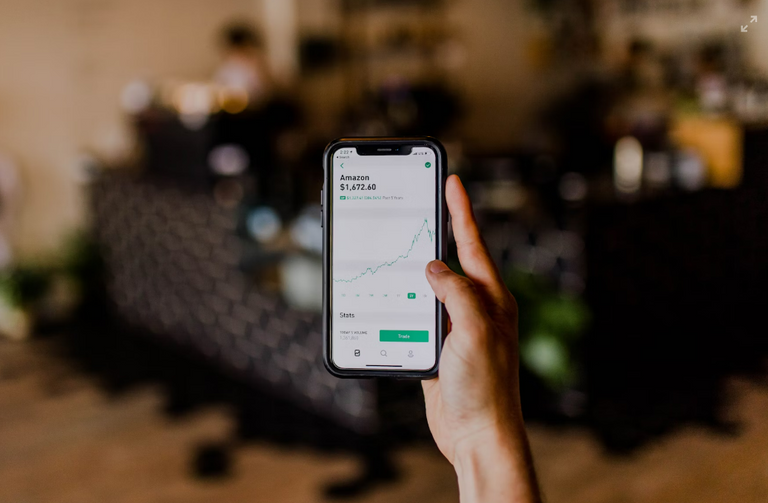In recent years, algorithmic trading has transformed the landscape of stock market investment. Traders and investors, from professionals to amateurs, are increasingly using algorithms to make decisions in fractions of a second. If you're considering diving into algorithmic trading, it’s important to first understand the fundamentals of this approach, its advantages, and how it works.
What is Algorithmic Trading?
Algorithmic trading, also known as algo trading, refers to the use of computer algorithms to execute trade orders based on predefined criteria. These algorithms can analyze a wide range of data, including historical price patterns, news, economic reports, and other factors to determine the best time and price for executing trades.
In simple terms, it's the process of automating trades by using rules and algorithms to execute them, rather than relying on manual decision-making.
How Does Algorithmic Trading Work?
Algorithmic trading works by executing a large number of orders at speeds and volumes that would be impossible for human traders to achieve. The process typically involves these key components:
Predefined Rules: Traders or developers program the system to follow specific rules and parameters. These might include price thresholds, moving averages, or even sentiment analysis from social media.
Data Analysis: The algorithm analyzes vast amounts of market data, identifying patterns and trends that may not be immediately apparent to human traders. This analysis could include examining market conditions, volatility, or correlation between assets.
Order Execution: Once the algorithm has analyzed the data and meets its conditions, it executes trades. This can occur in fractions of a second, ensuring orders are placed at the optimal time to capitalize on price movements.
Execution Speed and Accuracy: Algorithms can trade far quicker and more accurately than human traders. This speed is crucial in volatile markets where prices can change within milliseconds.
Types of Algorithmic Trading Strategies
There are several strategies used in algorithmic trading, depending on the goals and the market conditions. Some of the most common ones include:
Trend-Following Strategies: These algorithms attempt to capitalize on market trends. By analyzing past price movements, they predict future trends and execute trades accordingly. Moving averages and momentum indicators are often used in these strategies.
Arbitrage: Arbitrage strategies aim to exploit price discrepancies between two or more markets. For example, if a stock is listed on two exchanges at different prices, the algorithm buys the cheaper one and sells the more expensive one to make a profit.
Market Making: Market makers provide liquidity to the markets by constantly quoting both buy and sell prices for an asset. The algorithm places orders on both sides, profiting from the spread between the bid and ask prices.
Mean Reversion: This strategy is based on the idea that the price of an asset will tend to return to its average or mean over time. If the price moves significantly away from this average, the algorithm will place trades expecting a reversion.
Statistical Arbitrage: This strategy uses mathematical models to identify price inefficiencies between related assets. The algorithm can take long positions in undervalued assets and short positions in overvalued ones.
Advantages of Algorithmic Trading
Speed and Efficiency: Algorithms can process huge amounts of data at lightning speeds, ensuring trades are executed quickly, which can lead to better execution prices and reduced slippage.
Elimination of Emotional Bias: Human traders often let emotions such as fear or greed influence their decisions. Algorithms follow predefined rules and execute trades without being influenced by emotions, reducing the likelihood of making impulsive decisions.
Backtesting: Traders can backtest their strategies using historical market data to evaluate how an algorithm would have performed in the past. This is crucial for refining strategies and improving their chances of success in live trading.
Cost Reduction: By automating trades, traders can reduce the costs associated with manual labor and the inefficiencies of human error.
Market Liquidity: Algorithmic trading adds liquidity to the markets, as algorithms continuously buy and sell assets, making it easier for other traders to enter and exit positions.
Risks and Challenges of Algorithmic Trading
Technical Failures: Algorithms are heavily reliant on technology, and technical glitches or connectivity issues can lead to significant losses. An error in the code can also cause unintended trades, exacerbating risk.
Overfitting: Algorithms that are overly tuned to historical data might fail in live market conditions. Overfitting can lead to strategies that appear profitable in backtests but perform poorly in real-time trading.
Market Manipulation: Some high-frequency trading algorithms can manipulate market prices through tactics such as "spoofing" (placing fake orders to influence prices) or "quote stuffing" (flooding the market with excessive orders). This has raised regulatory concerns.
Regulatory Scrutiny: Governments and regulators are still catching up with the rise of algorithmic trading. While algorithmic trading itself is legal, there are regulations in place to prevent market manipulation and ensure fair trading practices.
How to Get Started in Algorithmic Trading
For those interested in entering the world of algorithmic trading, here's a step-by-step guide:
Learn the Basics: Understand the fundamentals of trading, financial markets, and technical analysis. Familiarize yourself with market data, order types, and trading platforms.
Learn Programming: Most algorithmic trading strategies are built using programming languages such as Python, R, C++, or Java. Learning how to code is essential to building and customizing your trading algorithms.
Choose a Trading Platform: There are several platforms, such as MetaTrader and Interactive Brokers, that provide the tools and APIs needed to develop and test algorithms. Ensure the platform you choose is compatible with the type of trading you want to do.
Develop and Backtest Your Strategy: Create your algorithm by selecting a strategy (e.g., trend following, mean reversion), and then backtest it using historical data to evaluate its potential profitability.
Paper Trading: Before committing real money, simulate your strategy with paper trading (trading in a simulated environment with no real money) to test how it performs under live market conditions.
Start Small: Once you're confident in your algorithm's performance, start with small capital to minimize potential losses as you learn and refine your strategy.
Conclusion
Algorithmic trading is a powerful tool that has revolutionized the way traders approach financial markets. With its ability to process vast amounts of data, execute orders with precision, and remove human emotions from decision-making, it offers a significant edge in today's fast-paced markets. However, it's not without its risks, and successful algorithmic trading requires a combination of technical expertise, strategy development, and continuous monitoring.
Whether you're an experienced trader or a newcomer, understanding and utilizing algorithmic trading can provide valuable opportunities for profit, though it's important to always trade with caution and diligence.



